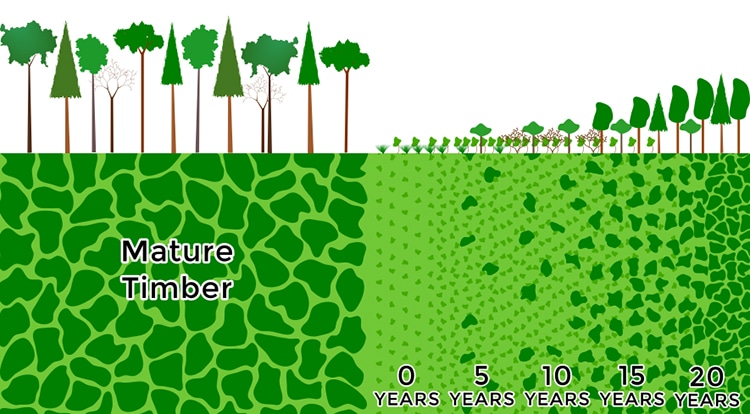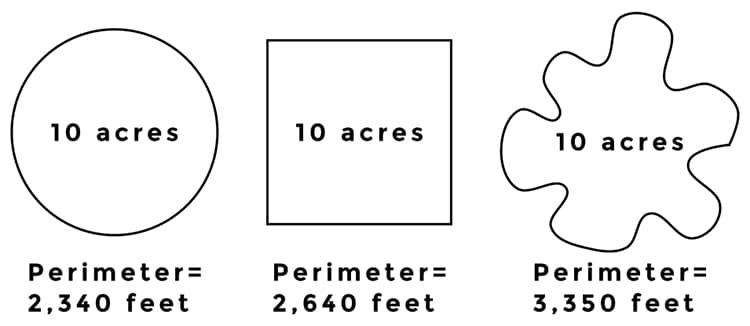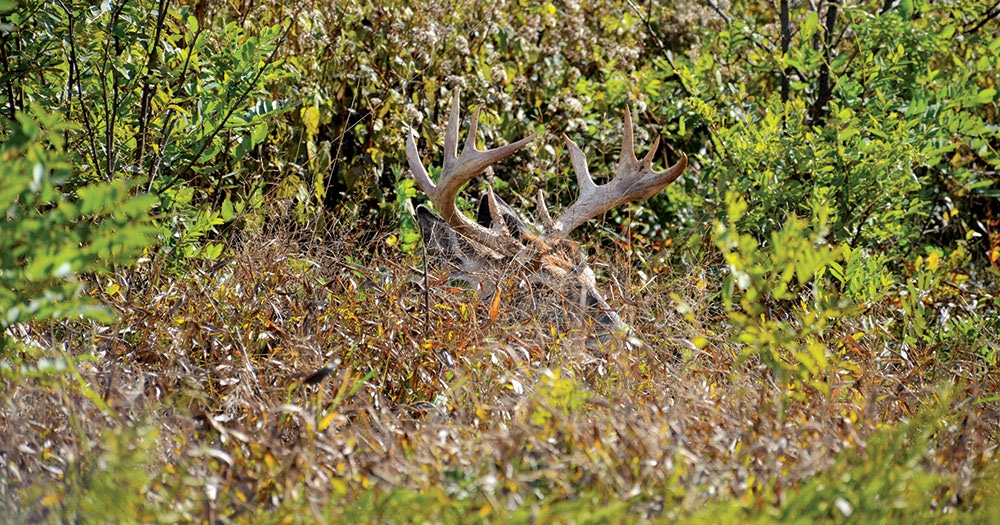A lot of attention is being given to “young forest” in the QDM world lately. The volume of quality natural forage that is available to deer and other wildlife in a recently regenerated forest makes opportunities for cutting timber an important consideration before you think about creating more food plots. In locations where forest cover is heavy, creating new openings can quickly produce a diversity of valuable forage species, and the cover that develops in the young-forest stage makes it a critical component of any land being managed for deer.
When you’re working with mature, marketable timber, this type of habitat improvement can be done at a profit, and often with someone else doing the labor. However, for some, the quality of their timber will not allow for this, or it may be necessary to cut trees which are not economically mature in order to create optimal habitat conditions. In these cases, the intensive labor involved with cutting down trees on your own makes creating young forest a daunting task.
“How do you eat an elephant?”
I can remember my father asking me this as a child. Before I had a chance to contemplate why I would eat an elephant, he answered the question himself:
“One bite at a time.”
Fortunately, this old adage can be applied to forest regeneration. By creating new forest openings in successive strips, weekend warriors can improve their hunting opportunities through a series of manageable projects while also allowing for forest regeneration through natural production of new seedlings. In fact, there are some clear advantages to gradually regenerating your woods in small stages as compared to a single, large cut.

An example of what a forest stand might look like as it is gradually regenerated, from a profile as well as an aerial view. To the far left is mature timber which has not been cut. To the far right is a portion of forest that was cut 20 years ago in the first strip cut. At center is a portion of forest that was cut most recently. The portion of this transition that was cut 0-10 years past will provide excellent forage and cover for whitetails.
Advantages of this Technique
Creating an Edge: That whitetails favor “edge” habitat is well known and time-tested. By continuing to cut into the edge of a mature forest as trees develop in your newly regenerated forest, the transitional zone is maintained. As deer follow this edge, browsing on seedlings and forbs, the strategic placement of a hunting stand on a mature tree will give you an excellent advantage.
Providing Cover Adjacent to Forage: As your cut area develops into tall saplings and shrubs, better cover will be provided. As the woody plants grow above browse height, their shade will eventually allow fewer forbs to grow, and less forage will be available. This will necessitate cutting a new strip to maintain the availability of browse. Now, cover will be available directly adjacent to forage. This will make excellent fawning habitat, and will encourage deer to stay on the property rather than just visiting.
Flexible Scheduling: While there will be an optimal window of time to cut your next strip, you can adjust the timing and acreage of the cutting to your schedule. A thin strip can be taken off annually, or a wider strip may be taken off after several years.
Testing the Waters: You can also hold off on cutting your next strip if new tree seedlings are not recruited as quickly as expected. If the reason for this is heavy deer browsing, you may want to wait on your next cut until the herd size is reduced. In this case, you may be glad that you did not attempt to regenerate the stand all at once.
Tips for using this Technique
Cut in Irregular Shapes: Convoluting the margins of a heavy cut will give more “edge” for a given area than one that is rectangular and has straight edges. This also softens the aesthetic impact of heavy tree cutting. Weigh this against the utility of having straight edges to serve as shooting lanes.

A diagram demonstrating the effect that the shape of the cut area has on the amount of edge created given the same area being cut.
Feather the Edges: Rather than having your young forest meet an abrupt wall of mature trees, thin the edges of your mature forest for a gradual transition. This will broaden the edge habitat where forage is available, and make it more likely that new tree seedlings will be ready to release in your next cut.
Give Thought to Strip-Width: This will be most important for your initial cut. Remember, the purpose of cutting is to allow ample light near the ground for seedlings and forbs to grow. Because of shade from surrounding trees, the size of your cut will influence how much light reaches the ground at different times of day. Different trees have different levels of tolerance to shade, so this will influence the future composition of your forest. The shape of your harvest area, the heights of surrounding trees, and the topography of the land will also impact the hours of direct sunlight in your cut area.
Expand a Gap: Instead of cutting in long strips, consider a variant of this method that involves clearing a roughly circular patch and then cutting concentric rings in each entry, yielding similar results. An initial patch can be placed where seedlings are present and ready to release. Alternatively, initial patches may be placed where timber is the poorest, allowing better quality trees to continue growing for longer.
Foresee the Obstacles: Before choosing a method for regenerating a new cohort of trees, make yourself aware of the common obstacles that are encountered when creating young forest. You’ll find more information in a blog I wrote for deerassociation.blackbaudwp.com titled “The Three Biggest Obstacles to Creating Young Forest Cover.” Those obstacles include interfering vegetation, overbrowsing by deer, and human perceptions of the visual impact.
If your hunting land is dominated by forest and needs more understory cover and forage, a commercial timber harvest isn’t your only option. Make your plans, crank your chainsaw, and take that first small bite of elephant!
